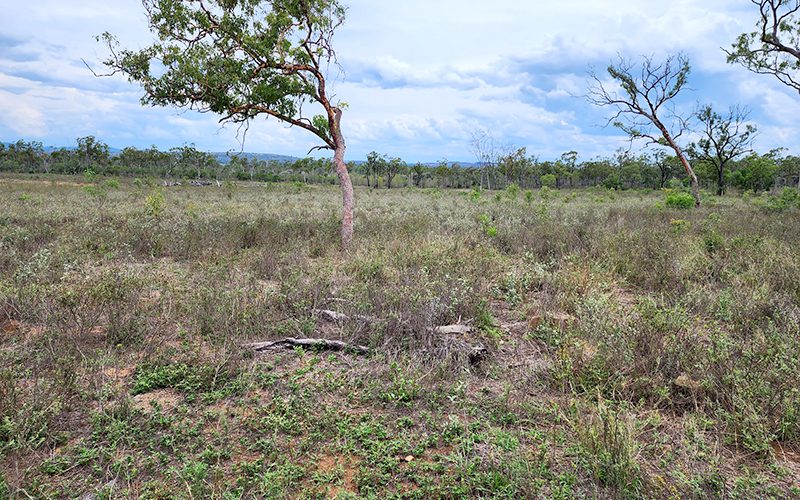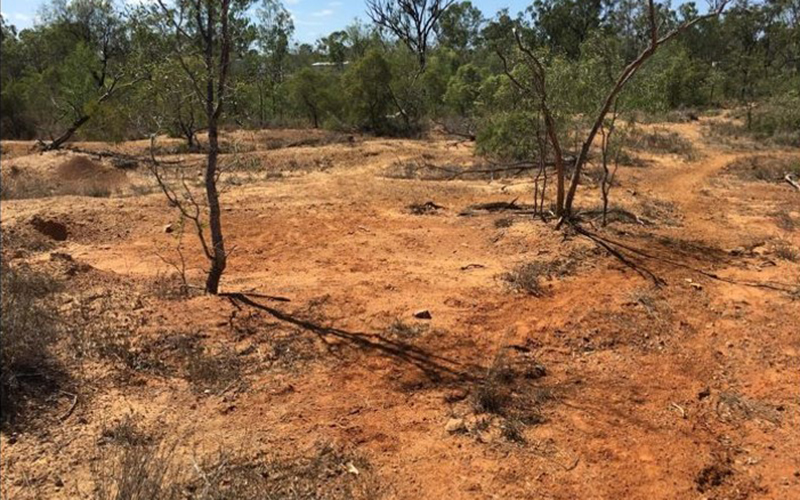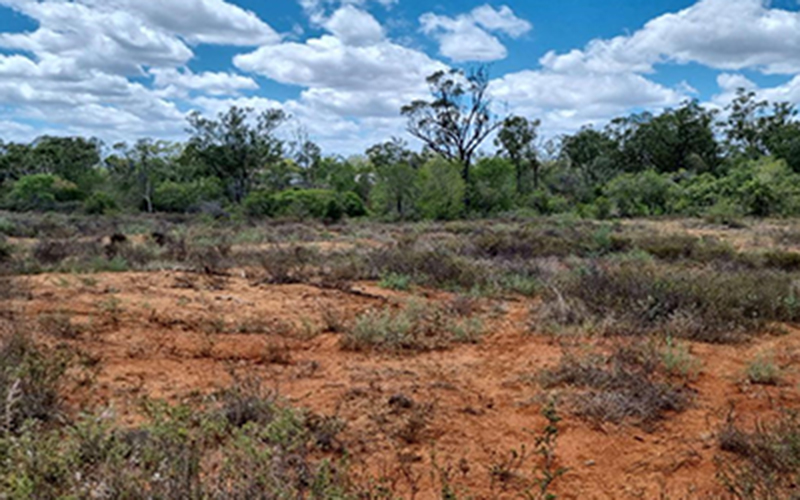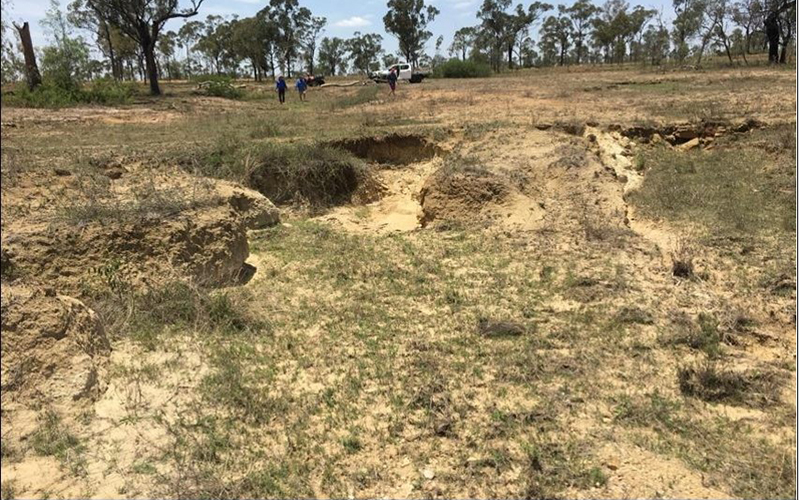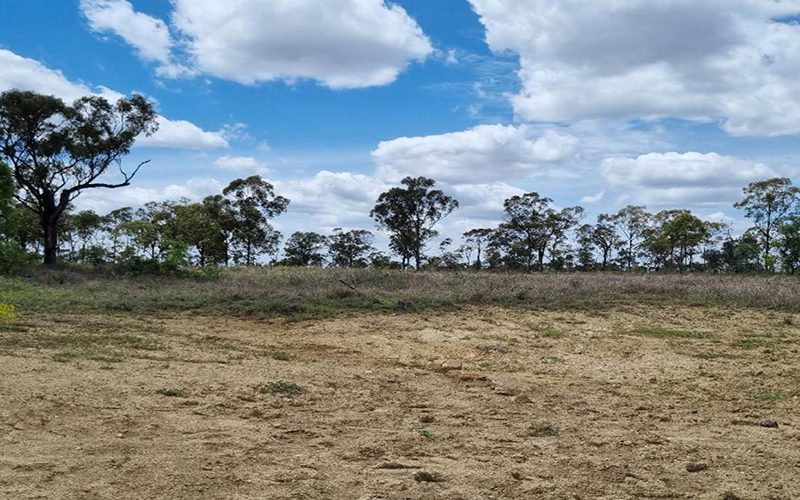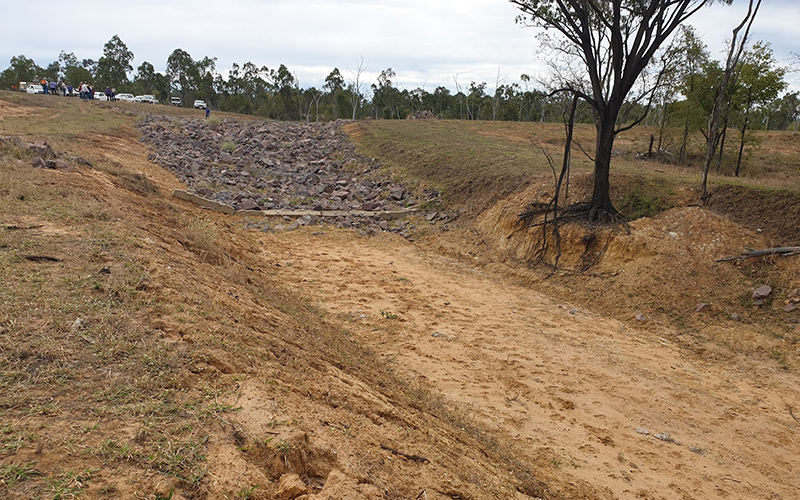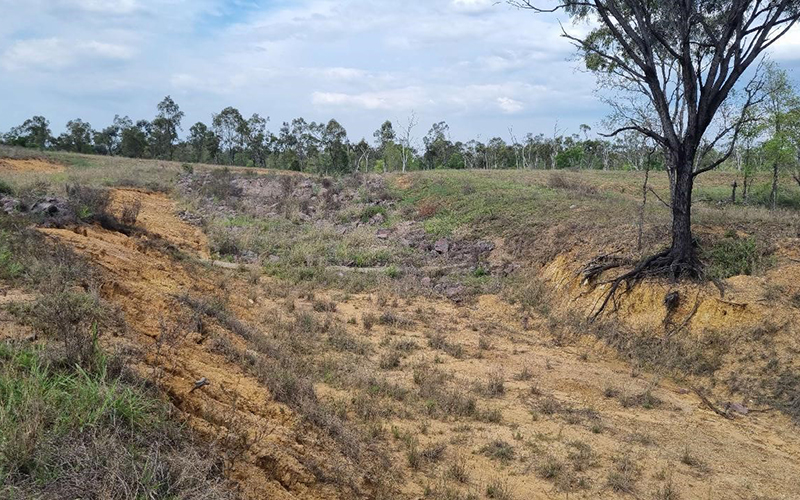Work on a gully at at Emohruo. Photographs were taken in November, 2018 before work began and in November, 2022.
Funding enables maintenance and monitoring of LDC gully work
NQ Dry Tropics has secured funding to maintain and monitor gullies remediated between 2017 and 2020. During this time, Landholders Driving Change completed 25 gully remediation projects (five large-scale and 20 small-scale sites).
This project is known as the Burdekin Major Integrated Project Gully Maintenance and Monitoring project. The aim is to evaluate the performance of the rehabilitation approaches and evaluate their effectiveness in reducing erosion.
Monitoring and maintenance work will be carried out from June 2022 to April 2025 and will include three wet seasons. Here’s a snapshot of some of the small-scale gullies we’ve been monitoring.
For further information about this project, read:
TWO MILE
A large gullied area on Two Mile was remediated by contour-ripping the main catchment area to promote infiltration and increase pasture growth.
Brush was planted at the gully heads to encourage colonisation of the gullied area.
Contour ripping and reshaping works were done by the contractor in the 2020 dry season. Following the earthworks, the landholder applied gypsum (5t) and seeded with a pasture mix containing American Buffel grass and a Stylosanthes legume. An electric fence was installed to exclude cattle from the remediated area.
The landholder constructed two rock weirs after the first wet season on the new work and planted Rhodes grass. He built four stick lines below the main log pile to slow water and collect sediment before it entered the lower gully head.
31 August, 2020 — applying gypsum and seeding in the newly-ripped catchment area.
28 October, 2020 — the recovery is spectacular.
ROBINSONS
A scalded site in the catchment of two gullies adjacent to Pelican Creek was remediated by ripping to encourage infiltration and pasture recovery.
Landholders continue to monitor the area to ensure the scalded ground continues “close up” as vegetation re-establishes.
If the natural revegetation process stalls, organic cover could be laid on the bare patches (e.g mulch, brush) and leaky weirs could be installed in the bare channels to accelerate the recovery process.
November, 2018 — eastern scald and gully site before work begins.
November, 2022 — the eastern scald after treatment.
TODSURE
The Todsure landscape remediation site is a hillslope gully up to a metre deep upslope of an existing dam and about 60m from the watershed and public road.
Remediation in late 2019 by the landholder, a civil contractor, involved two diversion banks joined to form a sediment trap dam, two spreaders, reshaping of the gully head, and ripping and seeding in the catchment above the banks.
The landholder is happy with result of the project as it appears to be working well.
The recommended maintenance on the work will involve some topsoil or organic cover (hay, for example) spread over the bare areas to kickstart vegetation growth if the cover doesn’t increase naturally.
February, 2019 — looking upslope at the main gully site..
November, 2022 — the main gully after reshaping and construction of the settlement dam and diversion banks.
EMOHRUO
The Emohruo 2019 landscape remediation site is at the eroded bywash of Mine Dam about 500m north of Pelican Creek. Remediation was undertaken in late 2019 by a civil contractor. Works involved:
- widening the bywash, reshaping the banks and installing a rock chute;
- building up the dam wall with the spoil so it is level across its length;
- building a diversion bank on the bench to the north to protect reshaped bywash; and
- contour ripping and reseeding the bench to the north of the bywash.
Vegetation establishment has been poor on the northern batters of the structure. Applied topsoil washed downslope followed by some of the highly-erodible subsoil. Monitoring will focus on the slopes (batters) on the northern side of the bywash where rills have formed, posing a risk for further erosion.
October, 2019 — looking upslope at the bywash and rock chute.
November, 2022 — the end of the bywash and rock chute.


